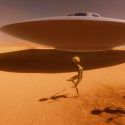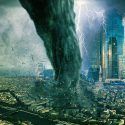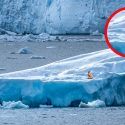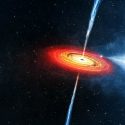The two biggest planets in our Solar System in one telescope view. And catastrophe is imminent. If Jupiter and Saturn suddenly were on a collision course,
which of the two planets would emerge victorious?
How would the composition of these planets affect the outcome? And what impact would this have on the rest of our Solar System?
On December 21, 2020, Jupiter and Saturn were closer than in nearly 400 years. This legendary event has an epic name, a ” Great Conjunction”. You could see both planets in the same telescope view. They appeared as a single star in the evening sky.
But they still were pretty far from an astronomical collision. If the two gas giants came a little closer, it wouldn’t be the first time Jupiter has gone head-to-head with another planet. And you could probably guess who won that battle.
Both Jupiter and Saturn are almost entirely gaseous, primarily consisting of hydrogen and helium. And while they may have solid cores, there is no sharp transition between the layers.
Jupiter would have some significant advantages. It is about three times as massive as Saturn, with almost double the volume.
And it’s moving faster too. Jupiter’s rotation speed reaches 13.07 km/s (8.1 mi/s), while Saturn rotates at a mere 9.69 km/s (6 mi/s). But Saturn brings a wild card to the fight. Within its two rings, there are at least 150 moons and moonlets.
If the planets drew closer together, Jupiter’s strong gravitational pull would cause these moons, moonlets, rocks, dust and ice to accelerate toward it. Some of them would be torn apart. That’s what happened when the comet, Shoemaker-Levy 9, collided with Jupiter in 1994. Originally, the comet was nearly 2 km (1.2 mi) wide. By the time it crashed, Jupiter’s gravity had torn it to pieces.
Those fragments smashed into Jupiter with the force of 300 million atomic bombs. And that heated Jupiter’s atmospheric temperature to nearly 40,000 °C (72,000 °F).
Titan, Saturn’s largest moon, is over two thousand times larger than this comet. So the force of it alone colliding with Jupiter would be massive. If Jupiter and Saturn collided, they would begin to merge. Their atmospheres would mix. That would raise the temperatures in the top layers of the gas giant’s atmosphere. It would get so hot that Jupiter would experience a chemical reaction, gaining more iron, silicates and even water.
Eventually, Jupiter would absorb Saturn. Or most of it. Scientists at Sun Yat-Sen University in China modeled a scenario about what happened when a massive planetary embryo, about ten times the size of Earth, collided with Jupiter four and a half billion years ago.
The impact was so energetic that it destroyed Jupiter’s original compact core. This formed a more diluted core composed of a dense mix of liquid-metallic hydrogen and helium.
But if Jupiter collided with Saturn, that event would be ten times more massive. Large amounts of material would spread out in space. And then all that material would come together into a single planetary object. We’d call it New Jupiter or Jupiturnus.
And maybe, that new planet would cause more trouble in the Solar System than you might expect. Jupiter is sometimes referred to as a failed star. That’s because its size and composition are similar to a brown dwarf.
But Jupiturnus would be more massive and have higher internal pressure. If the temperature was high enough, this could cause nuclear fusion in its core. Jupiturnus could become a star.
The impact of having two stars in our planetary neighborhood would be huge. It could even mean the end of life on Earth. But fear not. If these two planets merged, Jupiturnus would have a mass 30% greater than Jupiter. For nuclear fusion to ignite, the planet would need to reach the mass of 75 Jupiters.
So life on Earth would go on. But this would be a spectacular show with tons of gas and debris expelled. Maybe this would all be illuminated by the Sun, giving us a beautiful, glittering end to Saturn as we knew it.



























